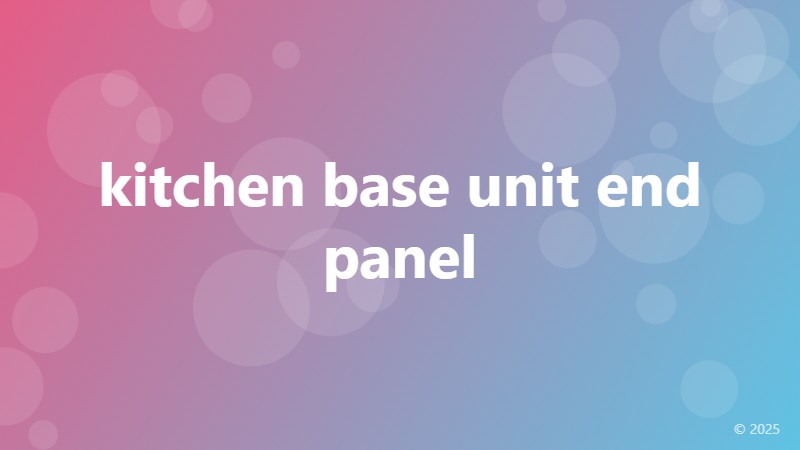kitchen base unit end panel

Enhance Your Kitchen's Aesthetic with a Stylish Kitchen Base Unit End Panel
When it comes to designing a kitchen, every detail matters. From the color scheme to the layout, each element plays a crucial role in creating a cohesive and functional space. One often-overlooked aspect of kitchen design is the base unit end panel. This humble component can make a significant difference in the overall aesthetic of your kitchen. In this article, we'll explore the importance of kitchen base unit end panels and provide guidance on choosing the perfect one for your kitchen.
What is a Kitchen Base Unit End Panel?
A kitchen base unit end panel is a decorative panel that is attached to the end of a base unit or cabinet in your kitchen. Its primary purpose is to conceal the unsightly edges of the unit and create a seamless transition between the cabinet and the surrounding walls or countertops. End panels can be made from a variety of materials, including wood, MDF, or acrylic, and come in a range of styles and finishes to suit different kitchen designs.
Why Do I Need a Kitchen Base Unit End Panel?
So, why is a kitchen base unit end panel necessary? Here are a few compelling reasons:
• Aesthetics: A stylish end panel can elevate the overall look of your kitchen, creating a sense of continuity and sophistication. It can also help to conceal any exposed edges or gaps, making your kitchen appear more polished and refined.
• Functionality: End panels can provide additional storage or display space, depending on the design. For example, you can install a decorative trim or a small shelf to showcase your favorite cookbooks or kitchen utensils.
• Durability: A high-quality end panel can protect your base unit from scratches, dents, and other forms of damage. This is particularly important in high-traffic areas, such as near the sink or stove.
Choosing the Perfect Kitchen Base Unit End Panel
With so many options available, selecting the right kitchen base unit end panel can be overwhelming. Here are some tips to consider:
• Material: Choose a material that complements your kitchen's style and theme. For example, wood or MDF panels are ideal for traditional or rustic kitchens, while acrylic panels are better suited for modern or minimalist designs.
• Finish: Ensure the finish of your end panel matches or contrasts with the surrounding cabinets and countertops. This will create a cohesive look and prevent the panel from standing out in a negative way.
• Design: Consider the style and design of your kitchen. For example, a decorative trim or a simple, flat panel may work well in a traditional kitchen, while a sleek, handleless design is more suitable for modern kitchens.
By incorporating a stylish and functional kitchen base unit end panel into your kitchen design, you can create a space that is both beautiful and functional. Remember to choose a panel that complements your kitchen's style and theme, and don't be afraid to get creative with the design and material. With the right end panel, you can take your kitchen to the next level and create a space that you'll love for years to come.